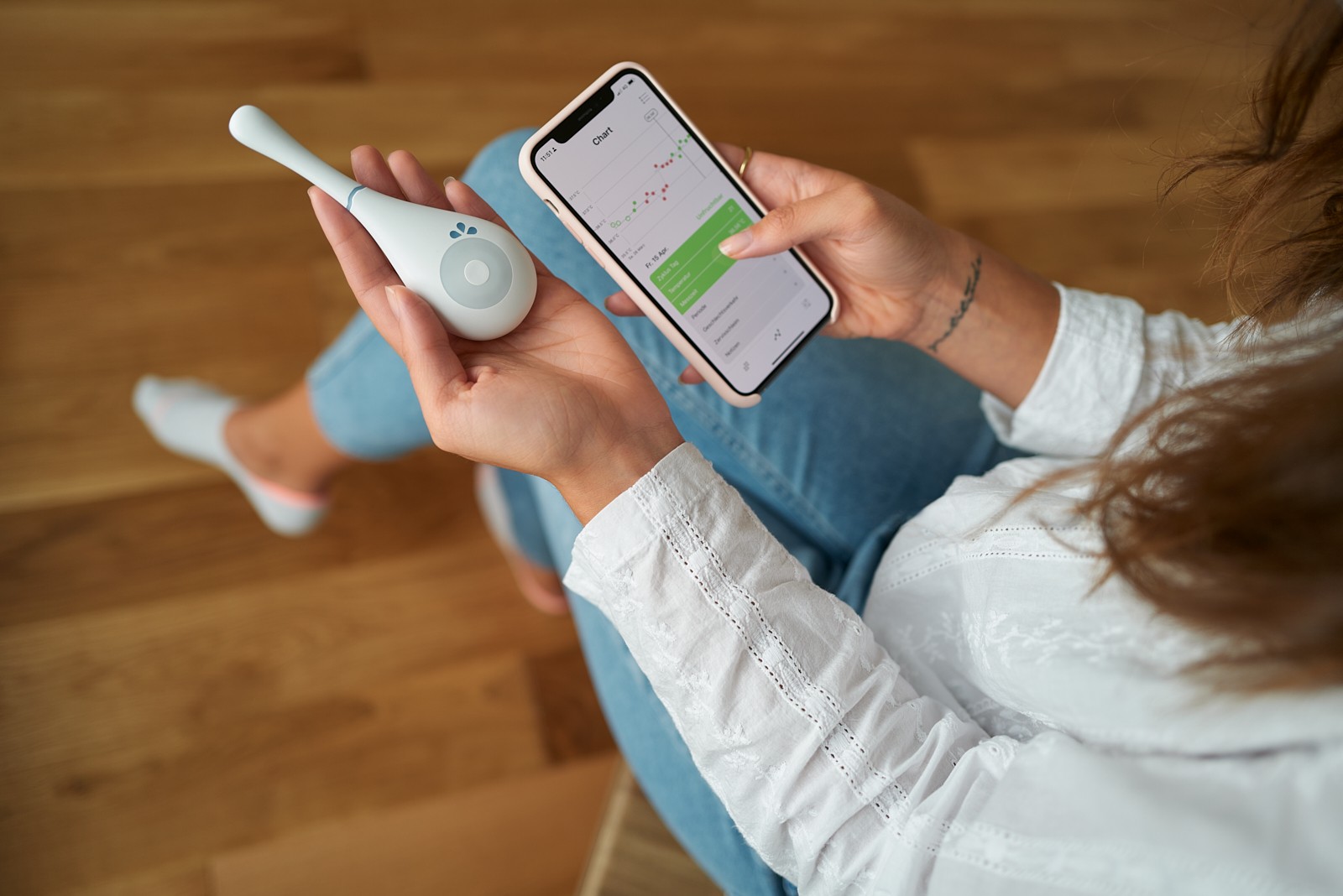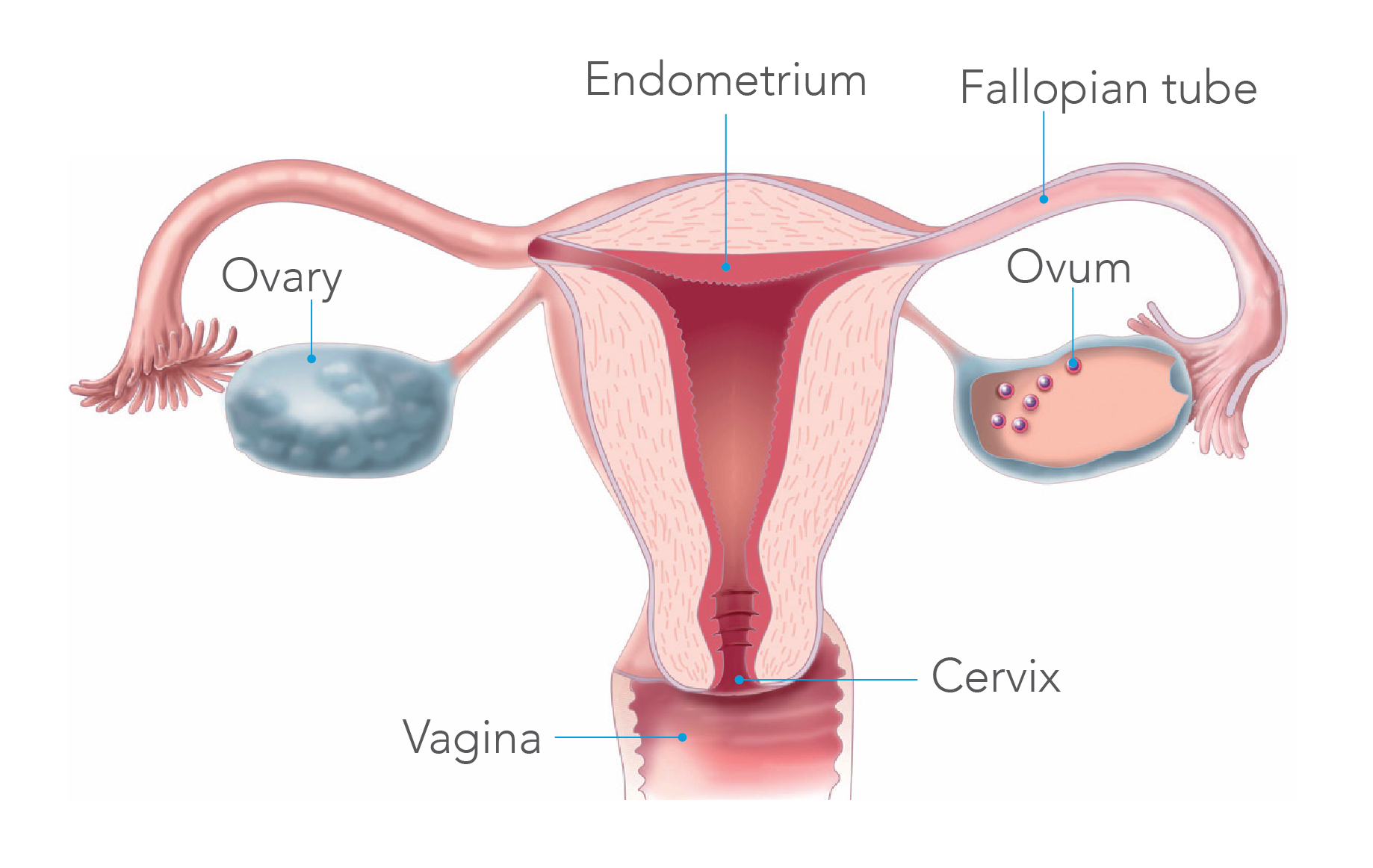Know Your Cycle to Know Yourself
Demystifying the Female Reproductive System and Menstrual Cycle
How much do you know about the menstrual cycle?
These events go on for more than three decades of a woman’s life, yet some don’t know as much about it as they should. The menstrual cycle affects nearly all areas of a woman’s daily life. Learning what happens during your cycle helps you better care for your health.
We spoke to Dr. Niels Van De Roemer, PhD, Daysy's medical expert, and he shared with us everything women should know about the female reproductive system and menstrual cycle. Now, we’re sharing that with you.

Learn About Your Menstrual Cycle: Anatomy, Phases, and Control
The menstrual cycle is a series of sequential events in the female reproductive system. It begins at puberty, and each cycle lasts 28 days on average but may vary between 21 to 40 days.1 A woman’s reproductive years typically end at menopause when the menstrual cycle ceases.
What Are the Female Reproductive Organs?
The female reproductive system includes internal organs, accessory glands, and vulva.2 Let’s take a closer look below.
- Ovaries — These are the paired primary reproductive organs in females. They produce eggs and female hormones — estrogen and progesterone. The eggs lie in a protective sac (follicle) where they grow and mature. At birth, females have all the eggs they’ll ever have in their ovaries, but they only begin growing at puberty.
- Uterus — This pear-shaped organ, roughly the size of a fist, houses the growing fetus during pregnancy. It’s much smaller before puberty, after which it grows to about 1.97 to 3.94 inches (5 to 10 cm). The uterus grows even further during pregnancy, extending to the sides and upward above the belly button. A heart-shaped uterus (bicornuate uterus) is possible but not common. It only appears in 1 in 1000 women.
The uterus has a lining called the endometrium, which varies in thickness throughout the menstrual cycle. It has blood cells, nutrients, and tissues. Without pregnancy, the endometrium breaks down and sheds as menses, approximately 500 times in a woman's lifetime.
Fun fact! The uterus manufactures a new organ during pregnancy called the placenta. This nourishes the baby, provides oxygen, and removes waste before their kidneys, lungs, skin, and livers become fully functional at birth.
Although the jaw muscle holds the Guinness world record for the strongest muscle, the uterus is strongest by weight. It generates enough force to push a baby down the birth canal despite being thin.
Interestingly, the uterus is more than just a house for babies. New research reveals that it’s connected to your brain and can affect your ability to remember things.3 The uterus narrows downward and projects into the vagina forming the cervix. - Cervix – This is the donut-shaped part of the uterus. It has a central opening that allows menses through and widens during birth to let the baby out. Throughout pregnancy, the cervix forms a mucus plug that secures the baby till it’s time to be born.
Hormonal variations throughout the menstrual cycle cause the cervix to undergo several changes. This includes alterations in its shape and secretions. Cervical discharge is vital because it protects the uterus from bacteria and contributes to a woman’s fertility. - Vagina — This elastic tube continues with the cervix above and opens into the vulva below. Therefore, it connects the external and internal parts of the female reproductive system. The vagina is about 3.15 to 4.72 inches (8 to 12 cm) long.
- Fallopian tubes — These are tubular extensions from the uterus. They end near the ovary and transport eggs to the uterus. It also serves as a site for fertilization.
- Accessory glands — Bartholin's gland, breasts, and skene's gland, are part of the female reproductive system. Bartholin’s glands are found around the vaginal opening, while Skene’s glands open beside the urethra. Both secrete lubricating fluid during sexual stimulation. Breasts or mammary glands produce milk for babies but are involved in sexual activity too.
- Vulva — Everything on the outer female genital area falls under this category. Unfortunately, many adults with limited understanding of the female anatomy say vagina when they really mean the vulva.
Parts of the vulva include the labia minora, labia majora, mons pubis (mons veneris), clitoral acorn, and clitoral prepuce, as well as the urethral outlet and vaginal entrance. The mons pubis is the fat pad over the pubic bone, which serves as a cushion during sexual activity. Labia majora and minora are fleshy tissue folds that enclose and protect the vaginal and urethral openings.
Just as our faces are different, so are our vulvas. A large study examined 657 vulvas under a microscope and found that the most significant feature they had in common was their uniqueness.4 Hence, there’s no need to worry if yours doesn’t look like the textbook or internet images. - The clitoris (tip of the iceberg) — Many scientific and medical textbooks don’t comprehensively describe the anatomy of the clitoris, partly because it was only fully discovered in 1998. This also explains why the clitoris is still relatively unknown in all its glory today. This organ is about 3.15 to 5.51 inches (8 to 13 cm) long and grows throughout your life.
- Although you can only see a small button-like lump in the upper part of your vulva, covered by a foreskin, the clitoris has much more underneath. Its job is to make you feel good: It has more than 800 nerve endings, more than anywhere else in the body, and can trigger powerful sensations.

What Happens During the Menstrual Cycle?
Some say the menstrual cycle has four phases, but it truly has two (follicular and luteal phases). Menstruation and ovulation are key events but fall under the first phase. Here’s what happens during each cycle.
Follicular Phase
You enter the follicular phase of the menstrual cycle on the first day of your period. Multiple follicles in the ovary begin development simultaneously, but only one normally reaches maturity. The mature egg released during ovulation is only viable for about 18 hours. The endometrium starts growing during this stage too.
It’s possible to release multiple eggs in one cycle. Dr. van de Roemer explained that the eggs are typically released within 24 hours. This is crucial because progesterone from the corpus luteum blocks further ovulations. Ovulation conventionally happens 12 to 14 days before your period and terminates the follicular phase.
Luteal phase
The structure left behind after the egg is released turns yellow and is known as the corpus luteum. It produces mainly progesterone to maintain the uterine lining.
In the coming days, the endometrium continues to thicken and prepare for pregnancy. The corpus luteum only lasts 12 to 14 days without pregnancy. Afterward, hormones drop, the endometrium breaks down, and it’s shed as your period. Once again, another menstrual cycle begins.
How Does Your Body Regulate the Menstrual Cycle?
The delicate balance of hormones from the hypothalamus, pituitary gland, and ovaries keeps the menstrual cycle going.5
Gonadotropin-releasing hormone (GnRH) from the hypothalamus kickstarts the whole process. It stimulates the pituitary gland to produce follicle-stimulating hormone (FSH) and luteinizing hormone (LH).
The pituitary hormones act on the ovaries. FSH stimulates follicle growth and maturation, while LH surge causes ovulation. The ovaries also produce essential sex hormones, estrogen and progesterone.
Hormone levels vary throughout the menstrual cycle producing the various events you experience. For instance, estrogen directs the follicular phase, while progesterone takes over the luteal stage.
Why You Should Track Your Menstrual Cycle
If you’re looking for a reason to start tracking your menstrual cycle, here are four.
Track Your Ovulation
Usually, ovulation occurs about two weeks before your period. But this isn’t the same for everyone, as it depends on the length of your menstrual cycle.
Tracking your ovulation helps you maximize your chances of getting pregnant if you’re trying to have kids. You can detect if ovulation doesn’t occur (anovulatory cycles). This may be something to discuss with your doctor.
Also, you won’t be waking up to stained underwear and sheets because you can predict when your next period is coming.
Build a Solid Relationship with Your Body
We've had our bodies all our lives, yet we don’t know nearly enough about them. Knowing your body better helps you develop a healthy relationship with it. That’s where tracking your menstrual cycle comes in.
You can learn about what’s happening inside you and why it’s occurring. This opens your eyes to the wonders of female anatomy and helps you appreciate all your body does for you. It allows you to observe the benefits ovulation offers for your heart, brain, bones, and immune system health.
Tracking your cycle may reveal its connection with your diet, lifestyle, mood, and stress. You can follow your Premenstrual syndrome (PMS) symptoms as well. Armed with this information, you can spot unpleasant triggers and make changes to improve your reproductive and overall health.
Fertility Awareness
A common misconception is that you can only get pregnant when ovulating. While ovulation is your most fertile period, it’s not the only time you can get pregnant.
Healthy sperm can stay alive in your reproductive tract for up to five days. Add this to the lifespan of the egg, and your fertile period may extend to six days. Fertility awareness methods such as tracking changes in your basal body temperature help differentiate the fertile and infertile phases of your cycle.
Detect Changes in Your Body Early
Your menstrual cycle can change slightly from one period to the next. This may be a normal variation or indicate an underlying health issue.
Conditions such as thyroid disease, Polycystic Ovary Syndrome (PCOS), endometriosis, hormonal imbalance, and other menstrual and reproductive disorders can affect your menstrual cycle. If you spot something odd, swiftly seek medical advice.
How BBT Tracks Fertility So You Know Your Body Better
Basal body temperature (BBT) is your body temperature at rest which helps you monitor ovulation.6 You’d have to take a reading each morning immediately after waking up.
Your basal temperature varies slightly as you go through the menstrual cycle. For instance, right after egg release, increased progesterone from the corpus luteum elevates your basal temperature by 0.4 to 0.5°F (0.2 to 0.3°C). Seeing this temperature change tells you that ovulation has occurred.
Over 34 years of cycle research and analysis of over 10 million cycles are behind the creation of the fertility tracker, Daysy. It relies on your basal body temperature to track ovulation.
Daysy takes less than a minute to get the most precise temperature reading. Since you won’t use a separate thermometer or manually enter this information, it eliminates user error.
Your Daysy fertility tracker isn’t just a fancy thermometer. Its innovative technology integrates the data collected and distinguishes your infertile and fertile days with over 99% accuracy.7 The best part is that it corrects factors that affect your cycles, such as stress, lack of sleep, or alcohol consumption.
Essentially, you’ll be getting completely personalized information about your cycle. On the DaysyDay App, you can also monitor your basal body temperature trends and menstrual cycle history.

Final Thoughts
The female anatomy is a marvel. This intricately designed system is yours to protect for life. However, caring for your body the right way begins with learning more about it.
The average length of a woman’s reproductive period is about 37 years, so tracking your menstrual cycle is crucial for overall health.8 It helps you understand your body, spot unusual changes, learn patterns, and identify ovulation.
Your basal body temperature is a fertility sign that changes according to the phases of your menstrual cycle. It tells you if and when ovulation occurs. The Daysy fertility tracker has a sensitive sensor to detect these slight variations in your basal body temperature. But it doesn’t just stop there. Daysy goes the extra mile to analyze this data and reliably predicts the fertile and infertile periods of your menstrual cycle. Take control of your reproductive health today and learn about your cycle with the Daysy fertility tracker.
To read more articles like this, sign up for our newsletter:
Daysy - Your personal fertility tracker (incl. app DaysyDay)
299.00 EUR
Daysy is an intelligent fertility tracker that lets you get to know your very own menstrual cycle.
Sources
[1] Periods and fertility in the menstrual cycle - NHS
[2] Female Reproductive System: Structure & Function | Cleveland Clinic
[5] The Hypothalamic-Hypophyseal-Ovarian Axis and the Menstrual Cycle | GLOWM
[6] Basal body temperature for natural family planning - Mayo Clinic
[7] Accuracy





